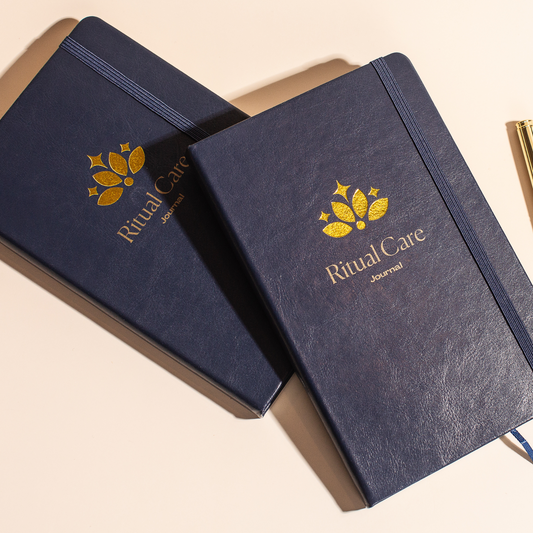We have all experienced loss, heartache, and sorrow. Nobody wants to go through emotional pain, but it is an inevitable human experience. As the Buddha taught, we are each given ten thousand joys and ten thousand sorrows. The challenge lies in not getting mired in either the joy or the pain, keeping our hearts open and soft instead of closed and constricted. If we hold on to the hurts and wounds of the past, we start to accumulate emotional baggage—the dead weight of old experiences.
Freeing yourself from this emotional baggage is crucial because dwelling on the past prevents you from participating in the present, which is the only place in which you can experience love, happiness, fulfillment, and miracles.
Many people are hesitant to approach their inner pain and afraid to open old wounds. Yet it isn’t necessary to charge into a minefield, and you don’t have to brace yourself for a second round of hurt. By following the seven steps to emotional freedom, the healing process can unfold naturally, and when it does, you will experience relief and a surge of wellbeing
Take your time with each step, and don’t move on until you feel satisfied that the current step is working for you. For most people, it helps to have someone else join you in the exercise. Their presence provides reassurance that you aren’t alone or unsupported. If you have a therapist, you may want to ask him or her to support you in the process.
If at first you don’t feel anything, relax, take a breath, and easily tune into your body. On rare occasions someone may feel numb, which is the sign of a deep emotion that has been tied to fear. But everyone eventually feels something in the body doing this exercise. Remember that an emotion is a thought connected to a sensation.
To help you, here are the most common painful emotions that people carry around:
When you feel satisfied that you’ve expressed what the whole thing was about, take a second sheet of paper and retell the same incident from the other person’s point of view. Pretend that you are that person. Write down what they were feeling, why they acted as they did, and how they responded afterward. This part is harder than writing down the incident from our point of view, but stick with it – you will be taking a big step in freeing yourself from the pain of the past.
When you are satisfied with what you’ve written, take a third sheet of paper and relate the same incident as a newspaper reporter would, in the third person. How would an objective observer describe the incident in question? Give the details as objectively and evenhandedly as you can.
This step takes more time than the previous ones, but people enjoy it immensely. They discover that they are no longer trapped in their own point of view. They suddenly can call upon other voices in their head, a new set of eyes, a greater sense of detachment. It’s all very freeing.
It works well on your own, however, if you have a good friend or family member you can telephone. Read them your three versions, making sure that they understand why you’re doing this process. It’s important not to share your experience whose actions provoked the emotional hurt you’re recounting. They won’t understand and usually won’t cooperate. Ninety percent of the time they won’t agree with your version of the event in question; in fact, they might deny it even occurred. So stick with someone who is sympathetic and has your best interests at heart.
The ritual is important because it draws a line between your past and who you are right now. If you have fully expressed your old emotion, letting go feels very satisfying. But don’t try to force the release and be gentle with yourself. Release what you can today. It’s normal and natural if you find yourself doing later releases around the same hurt.
If you use this process consistently, you will eventually be able to release all of your old emotional pain, freeing yourself to return to your innate state of love, joy, and wholeness.
Freeing yourself from this emotional baggage is crucial because dwelling on the past prevents you from participating in the present, which is the only place in which you can experience love, happiness, fulfillment, and miracles.
Many people are hesitant to approach their inner pain and afraid to open old wounds. Yet it isn’t necessary to charge into a minefield, and you don’t have to brace yourself for a second round of hurt. By following the seven steps to emotional freedom, the healing process can unfold naturally, and when it does, you will experience relief and a surge of wellbeing
Take your time with each step, and don’t move on until you feel satisfied that the current step is working for you. For most people, it helps to have someone else join you in the exercise. Their presence provides reassurance that you aren’t alone or unsupported. If you have a therapist, you may want to ask him or her to support you in the process.
Step 1: Recall an Emotion
With your eyes closed, recall an emotional experience that is causing discomfort. See the circumstances clearly and vividly in your mind. It could be an embarrassing experience or a personal rejection; the feeling could revolve around loss or failure. Don’t generalize; be specific. You are recalling an emotional trigger. If your recollection is too uncomfortable, open your eyes and take a few deep breaths. When you feel less overwhelmed, close your eyes again and proceed.Step 2: Feel Your Body
Notice where in your body this emotional memory has lodged. For most people, when they bring up a disturbing emotion, a physical sensation of tightness, stiffness, discomfort, or even pain will be felt in the stomach or around the heart. For a smaller number of people the sensation will be felt in the throat or head. Locate where your sensation is occurring.If at first you don’t feel anything, relax, take a breath, and easily tune into your body. On rare occasions someone may feel numb, which is the sign of a deep emotion that has been tied to fear. But everyone eventually feels something in the body doing this exercise. Remember that an emotion is a thought connected to a sensation.
Step 3: Label Your Emotion
Now give your emotion a name. Is it fear or anger, sadness or resentment? Most people are surprised to find that they haven’t really labeled their emotions in the past. “I feel bad” or “I’m not having a good day” is as far as they get. Being more specific allows you to focus on the emotional baggage you want to release, so take the time to tell yourself exactly what you’re feeling.To help you, here are the most common painful emotions that people carry around:
- Anger, hostility, rage
- Sadness, grief, sorrow
- Envy, jealousy
- Anxiety, fear, worry, apprehension
- Resentment
- Humiliation
- Rejection
- Shame
Step 4: Express the Experience
Take some paper and a pen and write down what happened during your painful emotional experience. Put down in detail how you felt, what other people did, and how you reacted afterward.When you feel satisfied that you’ve expressed what the whole thing was about, take a second sheet of paper and retell the same incident from the other person’s point of view. Pretend that you are that person. Write down what they were feeling, why they acted as they did, and how they responded afterward. This part is harder than writing down the incident from our point of view, but stick with it – you will be taking a big step in freeing yourself from the pain of the past.
When you are satisfied with what you’ve written, take a third sheet of paper and relate the same incident as a newspaper reporter would, in the third person. How would an objective observer describe the incident in question? Give the details as objectively and evenhandedly as you can.
This step takes more time than the previous ones, but people enjoy it immensely. They discover that they are no longer trapped in their own point of view. They suddenly can call upon other voices in their head, a new set of eyes, a greater sense of detachment. It’s all very freeing.
Step 5: Share Your Experience
Now share your experience by reading your three accounts to someone else. In a group setting, which is how I normally lead the exercise, people are very eager to share, and the whole tone of the room is lifted, filled with excitement and laughter. The prospect of gaining emotional freedom from their past is exhilarating. So if you are doing the exercise at home, having a partner or a small group really enhances this step.It works well on your own, however, if you have a good friend or family member you can telephone. Read them your three versions, making sure that they understand why you’re doing this process. It’s important not to share your experience whose actions provoked the emotional hurt you’re recounting. They won’t understand and usually won’t cooperate. Ninety percent of the time they won’t agree with your version of the event in question; in fact, they might deny it even occurred. So stick with someone who is sympathetic and has your best interests at heart.
Step 6: Ritual of Release
Now it’s time to formally let go of your painful experience. Take your written stories and literally let them go. This is done through a ritual where you consign your past to the universe, God, or whatever higher power you recognize. You should feel free to devise your own ritual. Set your paper on fire and throw the ashes to the wind or the sea. Some people burn them on an altar and others flush them down the toilet. You can also tear the paper to pieces and bury them in the back yard.The ritual is important because it draws a line between your past and who you are right now. If you have fully expressed your old emotion, letting go feels very satisfying. But don’t try to force the release and be gentle with yourself. Release what you can today. It’s normal and natural if you find yourself doing later releases around the same hurt.
Step 7: Celebrate Your Release
Once you have released your old story to the universe, celebrate your moment of liberation. You can do this alone or with others, just so long as you appreciate the step you’ve taken. I find that people often skip this step unless reminded. They don’t want to make their emotions a big deal, but in reality they are a big deal. Emotions can trap and bind you − and they can also set you free and change your future.If you use this process consistently, you will eventually be able to release all of your old emotional pain, freeing yourself to return to your innate state of love, joy, and wholeness.






















